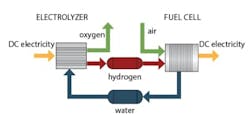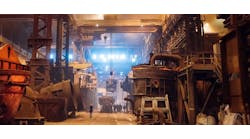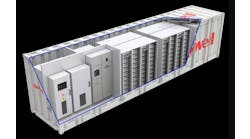My book Controlling the Future: Controlling Non-Industrial Processes to Prevent Climate and Other Disasters (2023) describes the knowledge we already have about artificial intelligence (AI) and climate processes. It also describes the many challenges yet to be solved.
The book was intended to be a textbook. However, after it was read by a student, he put it down and murmured, "Yeah, this is the kind of stuff I would like to work on after graduation." In this and future columns, I’ll discuss some of the "stuff" students can work on to reverse trends, such as the U.S. becoming the world’s top supplier of liquefied natural gas (LNG). I’ll start by outlining the "artificial tree.”
Building blocks of green energy
A carbon-free, fully distributed, and sustainable energy future requires safely matching energy needs and energy sources. Such a balance existed, initially, because people could perform only as much work as their muscles allowed. That lifestyle was followed by animal power, which was still supported by nature because nature continuously provided animals’ energy source (food furnished by vegetation). As humans moved into the Industrial Age and began using machines, the energy supply nature could continuously provide through the availability of vegetation was no longer enough, and we started to use up the energy sources (fossil fuels) that had accumulated underground over millions of years. We still use fossil fuels today.
Reestablishing nature's balance requires we stop using fossils—an exhaustible energy source—and start using inexhaustible, clean, and renewable energy sources. Jokingly, I often say we must follow the example of our stone age ancestors, who switched to bronze not because they ran out of stone, but because bronze was better. Green energy is much better than fossil fuel energy.
Reestablishing the balance between energy supply and demand can be accomplished by mimicking nature’s photosynthesis process, i.e. designing and using "artificial vegetation." This technology uses intermittently available sunlight to make and store hydrogen, so the energy derived is continuously available.
The calculations in my book show we don’t have much more than a generation to reestablish the balance between the energy needs and supplies of our planet by planting enough "artificial forests." Global warming has already exceeded 1.5 °C and the CO2 concentration in the air isn’t just the highest it’s been in 3 million years, but it’s also still increasing. Today, it’s at 424 ppm, which means, if CO2 wasn’t transparent, the atmosphere would be black.
The world’s energy needs increased partially because of the population explosion of the last two centuries. The global population in 1800 was about 1 billion people, but it doubled by 1930, and today it’s at 8 billion and growing. During the same period, per capita energy consumption increased five times, and will only rise as humans become more mobile and energy demands increase in both the advanced and developing worlds.
At the same time, resources aren’t used to solve the problem, but are wasted by focusing on adaptation to help people adjust to current and future effects of climate change, instead eliminating its causes. Money is also wasted by fighting energy wars, and subsidizing and supporting the fossil fuel industry to build new power plants, shipping ports and pipelines, as well as expanding drilling. These investments shorten the time left to convert the world to a green-energy economy.
Reversible fuel cell concept
By the time the student above retires, a reversible fuel cell (RFC) will be as common as PCs are today. It’s the key component of the artificial tree package. During the day, an RFC operates in electrolyzer mode, using solar energy that’s not needed at the time to make hydrogen (Figure 1, red path). At night, or whenever solar energy is insufficient to meet the electricity needs of the user, it switches into fuel-cell mode, reversing the direction of the hydrogen flow to provide all or part of the electricity needed (Figure 1, blue path).
The resulting “artificial tree” package can be a net hydrogen user or a net hydrogen generator, depending on the geographic location and size of the solar collectors, and the energy needs of the user. In the case of a home, electricity produced by the RFC meets the usual needs, and supplies the split pumps that heat and cool the home, while the hydrogen can refill the tanks of cars with fuel cells.
One of the economic advantages of such a system is that electricity is locally generated and doesn’t need to be transported over long distances, which eliminates the need for an electric grid that would otherwise double the cost of electricity.
In a hydrogen economy, trucking hydrogen is bidirectional. At times of high insolation—when demand for hydrogen is less than what’s generated—excess hydrogen can be trucked to a central storage hub, so it can be used during low-insolation periods—when demand exceeds supply. The same trucks will fill “local” storage tanks, which would be placed next to homes, and are similar in size and design to those used in fuel-cell cars. About 15,000 are already operating in San Francisco and 50,000 are in use worldwide. The districts in a fully distributed energy economy will require larger or smaller, centralized hydrogen storage hubs due to their geographic locations.







